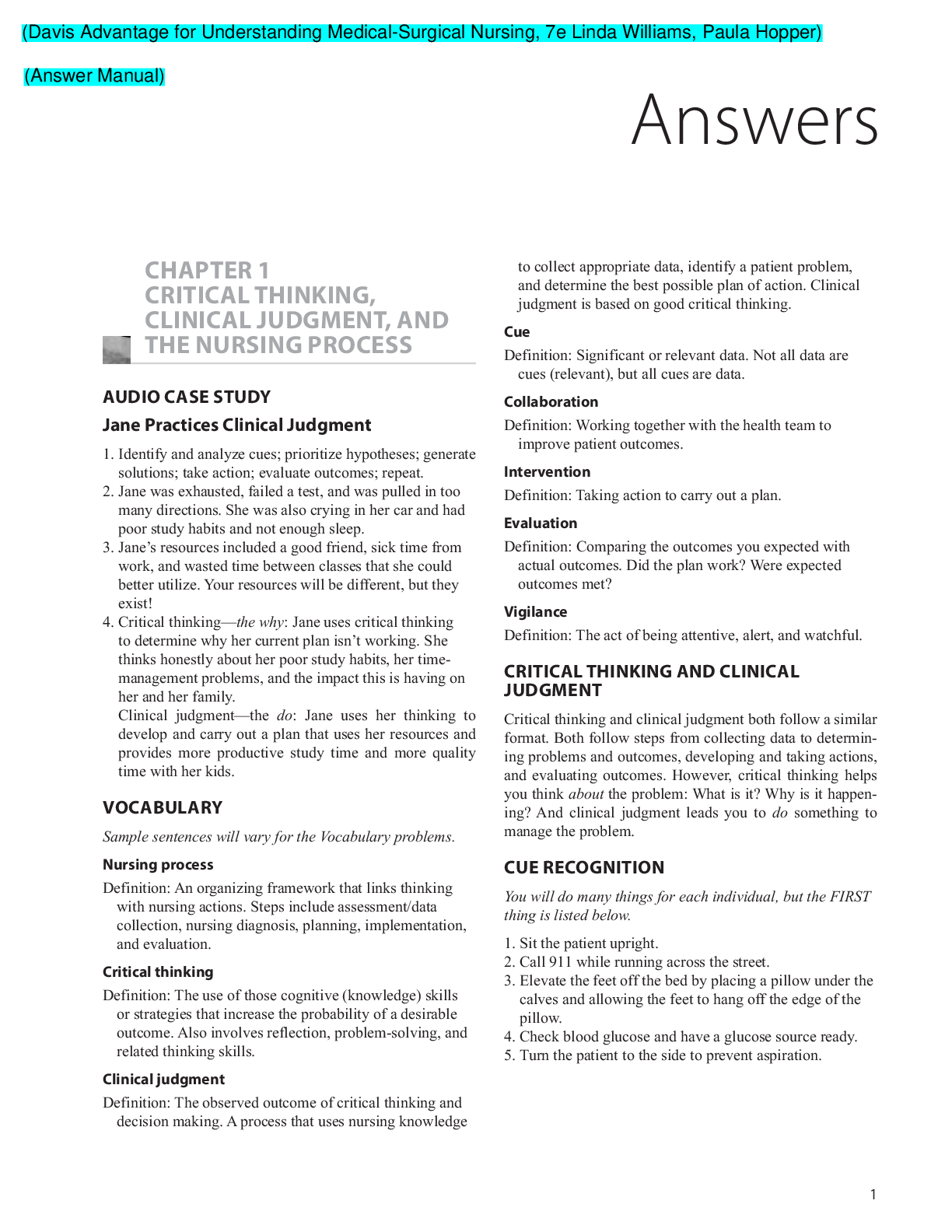Health Care > QUESTIONS & ANSWERS > Maternity Newborn and Women’s Health Nursing A Case-Based Approach 1st Edition O’Meara Test Bank (All)
Maternity Newborn and Women’s Health Nursing A Case-Based Approach 1st Edition O’Meara Test Bank
Document Content and Description Below
1. A pregnant woman is being discharged from the hospital after the placement of a cervical cerclage because of a history of recurrent pregnancy loss, secondary to an incompetent cervix. Which informa... tion regarding postprocedural care should the nurse emphasize in the discharge teaching? a. Any vaginal discharge should be immediately reported to her health care provider. b. The presence of any contractions, rupture of membranes (ROM), or severe perineal pressure should c. The client will need to make arrangements for care at home, because her activity level will be restri d. The client will be scheduled for a cesarean birth. ANS: B Nursing care should stress the importance of monitoring for the signs and symptoms of preterm labor. Vaginal bleeding needs to be reported to her primary health care provider. Bed rest is an element of care. However, the woman may stand for periods of up to 90 minutes, which allows her the freedom to see her physician. Home uterine activity monitoring may be used to limit the womans need for visits and to monitor her status safely at home. The cerclage can be removed at 37 weeks of gestation (to prepare for a vaginal birth), or a cesarean birth can be planned. DIF: Cognitive Level: Apply REF: dm. 675 TOP: Nursing Process: Planning | Nursing Process: Implementation MSC: Client Needs: Health Promotion and Maintenance 2. A perinatal nurse is giving discharge instructions to a woman, status postsuction, and curettage secondary to a hydatidiform mole. The woman asks why she must take oral contraceptives for the next 12 months. What is the bestresponse by the nurse? If you get pregnant within 1 year, the chance of a successful pregnancy is very small. Therefore, if a. pregnancy, it would be better for you to use the most reliable method of contraception available. The major risk to you after a molar pregnancy is a type of cancer that can be diagnosed only by me hormone that your body produces during pregnancy. If you were to get pregnant, then it would mak b. this cancer more difficult. If you can avoid a pregnancy for the next year, the chance of developing a second molar pregnancy c. improve your chance of a successful pregnancy, not getting pregnant at this time is best. d. Oral contraceptives are the only form of birth control that will prevent a recurrence of a molar preg ANS: B Betahuman chorionic gonadotropin (beta-hCG) hormone levels are drawn for 1 year to ensure that the mole is completely gone. The chance of developing choriocarcinoma after the development of a hydatidiform mole is increased. Therefore, the goal is to achieve a zero human chorionic gonadotropin (hCG) level. If the woman were to become pregnant, then it may obscure the presence of the potentially carcinogenic cells. Women should be instructed to use birth control for 1 year after treatment for a hydatidiform mole. The rationale for avoiding pregnancy for 1 year is to ensure that carcinogenic cells are not present. Any contraceptive method except an intrauterine device (IUD) is acceptable. DIF: Cognitive Level: Apply REF: dm. 679 TOP: Nursing Process: Planning | Nursing Process: Implementation MSC: Client Needs: Physiologic Integrity 3. The nurse is preparing to administer methotrexate to the client. This hazardous drug is most often used for which obstetric complication? a. Complete hydatidiform mole b. Missed abortion c. Unruptured ectopic pregnancy d. Abruptio placentae ANS: C Methotrexate is an effective nonsurgical treatment option for a hemodynamically stable woman whose ectopic pregnancy is unruptured and measures less than 4 cm in diameter. Methotrexate is not indicated or recommended as a treatment option for a complete hydatidiform mole, for a missed abortion, or for abruptio placentae. DIF: Cognitive Level: Apply REF: dm. 677 TOP: Nursing Process: Planning MSC: Client Needs: Physiologic Integrity 4. A 26-year-old pregnant woman, gravida 2, para 1-0-0-1, is 28 weeks pregnant when she experiences bright red, painless vaginal bleeding. On her arrival at the hospital, which diagnostic procedure will the client most likely have performed? a. Amniocentesis for fetal lung maturity b. Transvaginal ultrasound for placental location c. Contraction stress test (CST) d. Internal fetal monitoring ANS: B The presence of painless bleeding should always alert the health care team to the possibility of placenta previa, which can be confirmed through ultrasonography. Amniocentesis is not performed on a woman who is experiencing bleeding. In the event of an imminent delivery, the fetus is presumed to have immature lungs at this gestational age, and the mother is given corticosteroids to aid in fetal lung maturity. A CST is not performed at a preterm gestational age. Furthermore, bleeding is a contraindication to a CST. Internal fetal monitoring is also contraindicated in the presence of bleeding. DIF: Cognitive Level: Apply REF: dm. 680 TOP: Nursing Process: Assessment MSC: Client Needs: Health Promotion and Maintenance 5. A laboring woman with no known risk factors suddenly experiences spontaneous ROM. The fluid consists of bright red blood. Her contractions are consistent with her current stage of labor. No change in uterine resting tone has occurred. The fetal heart rate (FHR) begins to decline rapidly after the ROM. The nurse should suspect the possibility of what condition? a. Placenta previa b. Vasa previa c. Severe abruptio placentae d. Disseminated intravascular coagulation (DIC) ANS: B Vasa previa is the result of a velamentous insertion of the umbilical cord. The umbilical vessels are not surrounded by Wharton jelly and have no supportive tissue. The umbilical blood vessels thus are at risk for laceration at any time, but laceration occurs most frequently during ROM. The sudden appearance of bright red blood at the time of ROM and a sudden change in the FHR without other known risk factors should immediately alert the nurse to the possibility of vasa previa. The presence of placenta previa most likely would be ascertained before labor and is considered a risk factor for this pregnancy. In addition, if the woman had a placenta previa, it is unlikely that she would be allowed to pursue labor and a vaginal birth. With the presence of severe abruptio placentae, the uterine tonicity typically is tetanus (i.e., a boardlike uterus). DIC is a pathologic form of diffuse clotting that consumes large amounts of clotting factors, causing widespread external bleeding, internal bleeding, or both. DIC is always a secondary diagnosis, often associated with obstetric risk factors such as the hemolysis, elevated liver enzyme levels, and low platelet levels (HELLP) syndrome. This woman did not have any prior risk factors. DIF: Cognitive Level: Analyze REF: dm. 684 TOP: Nursing Process: Diagnosis MSC: Client Needs: Physiologic Integrity 6. A woman arrives for evaluation of signs and symptoms that include a missed period, adnexal fullness, tenderness, and dark red vaginal bleeding. On examination, the nurse notices an ecchymotic blueness around the womans umbilicus. What does this finding indicate? a. Normal integumentary changes associated with pregnancy b. Turner sign associated with appendicitis c. Cullen sign associated with a ruptured ectopic pregnancy d. Chadwick sign associated with early pregnancy ANS: C Cullen sign, the blue ecchymosis observed in the umbilical area, indicates hematoperitoneum associated with an undiagnosed ruptured intraabdominal ectopic pregnancy. Linea nigra on the abdomen is the normal integumentary change associated with pregnancy and exhibits a brown pigmented, vertical line on the lower abdomen. Turner sign is ecchymosis in the flank area, often associated with pancreatitis. A Chadwick sign is a blue-purple cervix that may be seen during or around the eighth week of pregnancy. DIF: Cognitive Level: Analyze REF: dm. 676 TOP: Nursing Process: Assessment MSC: Client Needs: Physiologic Integrity 7. The nurse who elects to practice in the area of womens health must have a thorough understanding of miscarriage. Which statement regarding this condition is most accurate? a. A miscarriage is a natural pregnancy loss before labor begins. b. It occurs in fewer than 5% of all clinically recognized pregnancies. c. Careless maternal behavior, such as poor nutrition or excessive exercise, can be a factor in causing If a miscarriage occurs before the 12th week of pregnancy, then it may be observed only as modera d. ANS: D blood loss. Before the sixth week, the only evidence might be a heavy menstrual flow. After the 12th week, more severe pain, similar to that of labor, is likely. Miscarriage is a natural pregnancy loss, but it occurs, by definition, before 20 weeks of gestation, before the fetus is viable. Miscarriages occur in approximately 10% to 15% of all clinically recognized pregnancies. Miscarriages can be caused by a number of disorders or illnesses outside the mothers control or knowledge. DIF: Cognitive Level: Understand REF: dm. 670 TOP: Nursing Process: Assessment MSC: Client Needs: Physiologic Integrity 8. A woman who is 30 weeks of gestation arrives at the hospital with bleeding. Which differential diagnosis would not be applicable for this client? a. Placenta previa b. Abruptio placentae c. Spontaneous abortion d. Cord insertion ANS: C Spontaneous abortion is another name for miscarriage; it occurs, by definition, early in pregnancy. Placenta previa is a well-known reason for bleeding late in pregnancy. The premature separation of the placenta (abruptio placentae) is a bleeding disorder that can occur late in pregnancy. Cord insertion may cause a bleeding disorder that can also occur late in pregnancy. DIF: Cognitive Level: Understand REF: dm. 669 TOP: Nursing Process: Assessment MSC: Client Needs: Physiologic Integrity, Physiologic Adaptation 9. With regard to hemorrhagic complications that may occur during pregnancy, what information is most accurate? a. An incompetent cervix is usually not diagnosed until the woman has lost one or two pregnancies. b. Incidences of ectopic pregnancy are declining as a result of improved diagnostic techniques. c. One ectopic pregnancy does not affect a womans fertility or her likelihood of having a normal preg d. Gestational trophoblastic neoplasia (GTN) is one of the persistently incurable gynecologic maligna ANS: A Short labors and recurring losses of pregnancy at progressively earlier gestational ages are characteristics of reduced cervical competence. Because diagnostic technology is improving, more ectopic pregnancies are being diagnosed. One ectopic pregnancy places the woman at increased risk for another one. Ectopic pregnancy is a leading cause of infertility. Once invariably fatal, GTN now is the most curable gynecologic [Show More]
Last updated: 1 year ago
Preview 1 out of 584 pages
.png)
Reviews( 0 )
Document information
Connected school, study & course
About the document
Uploaded On
Jan 10, 2022
Number of pages
584
Written in
Additional information
This document has been written for:
Uploaded
Jan 10, 2022
Downloads
0
Views
41





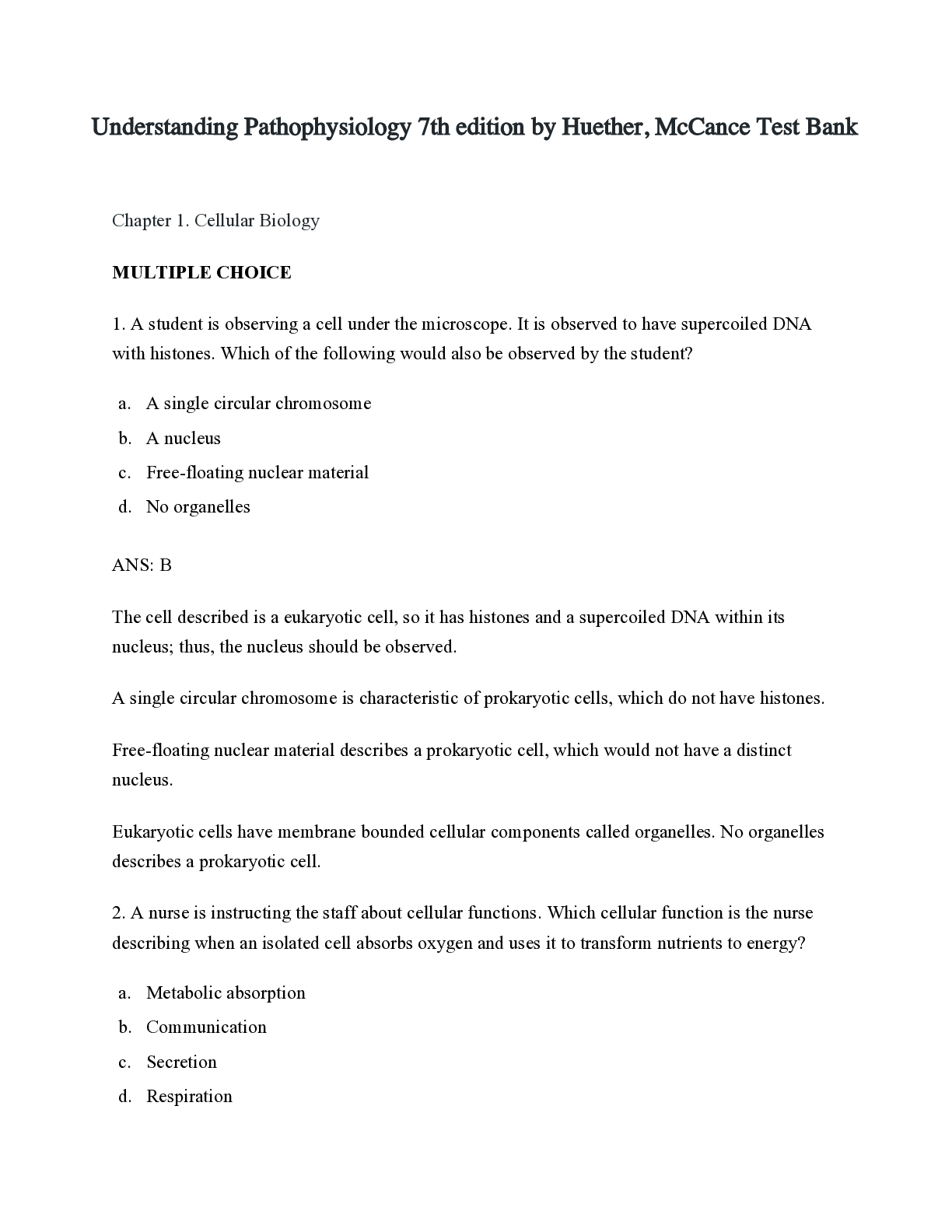

.png)
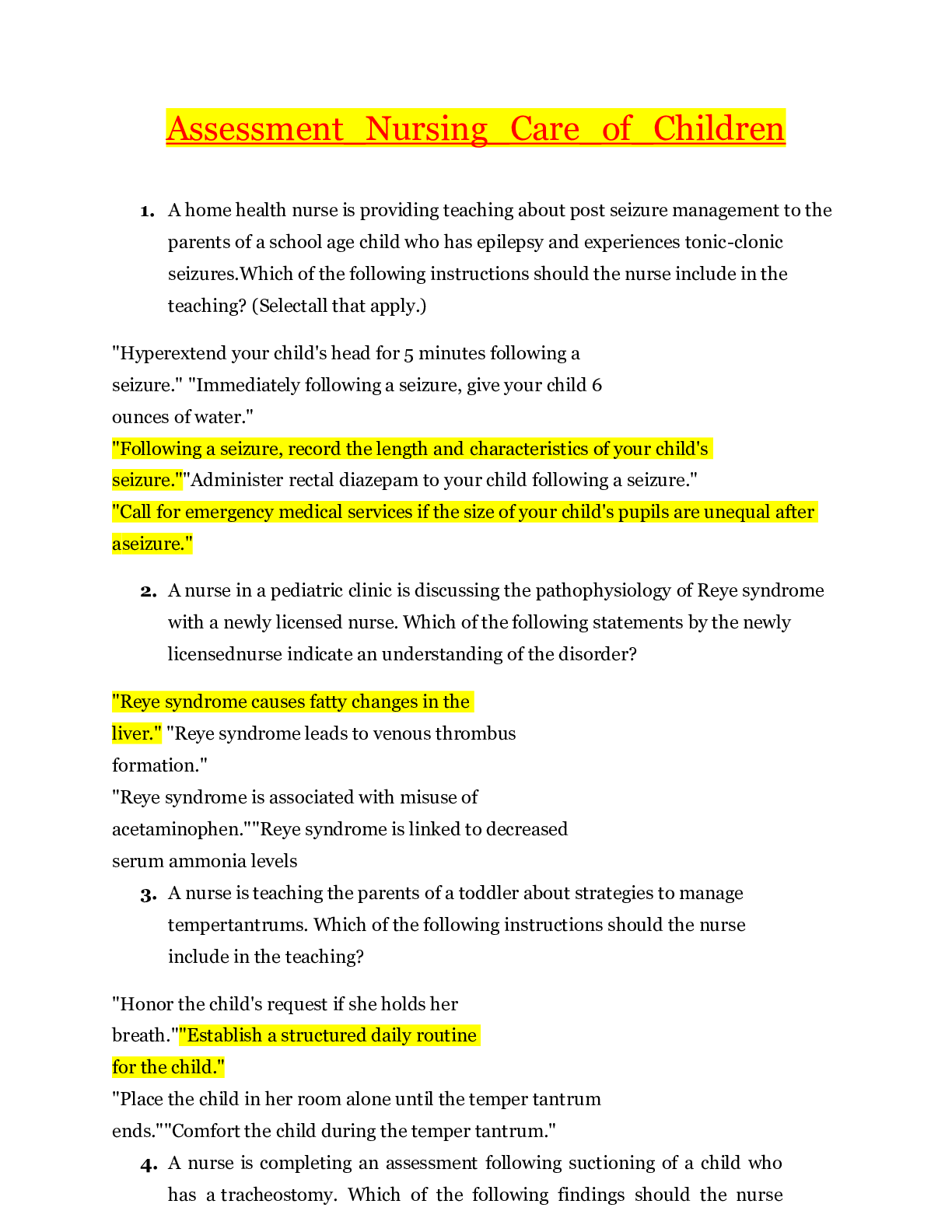


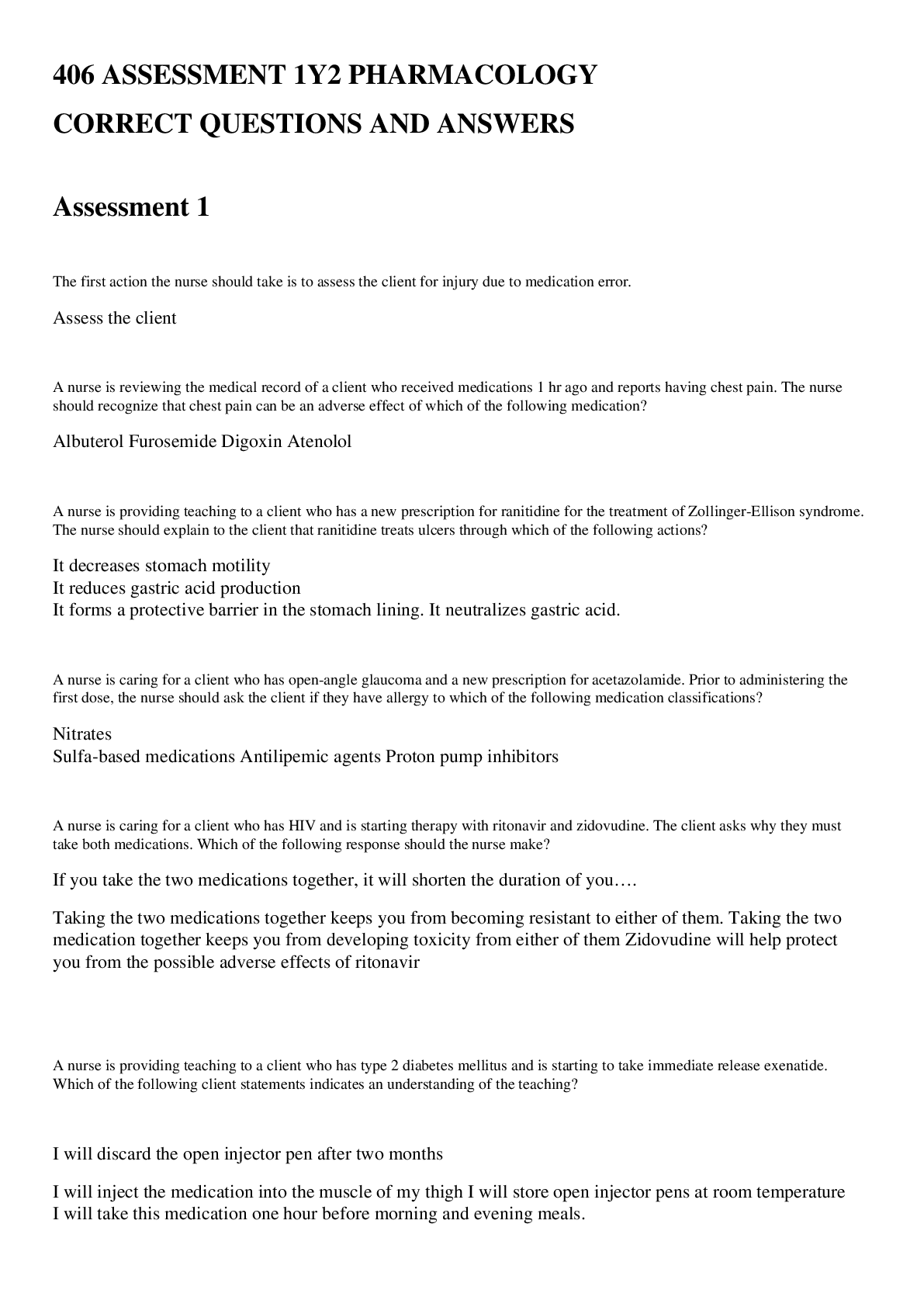
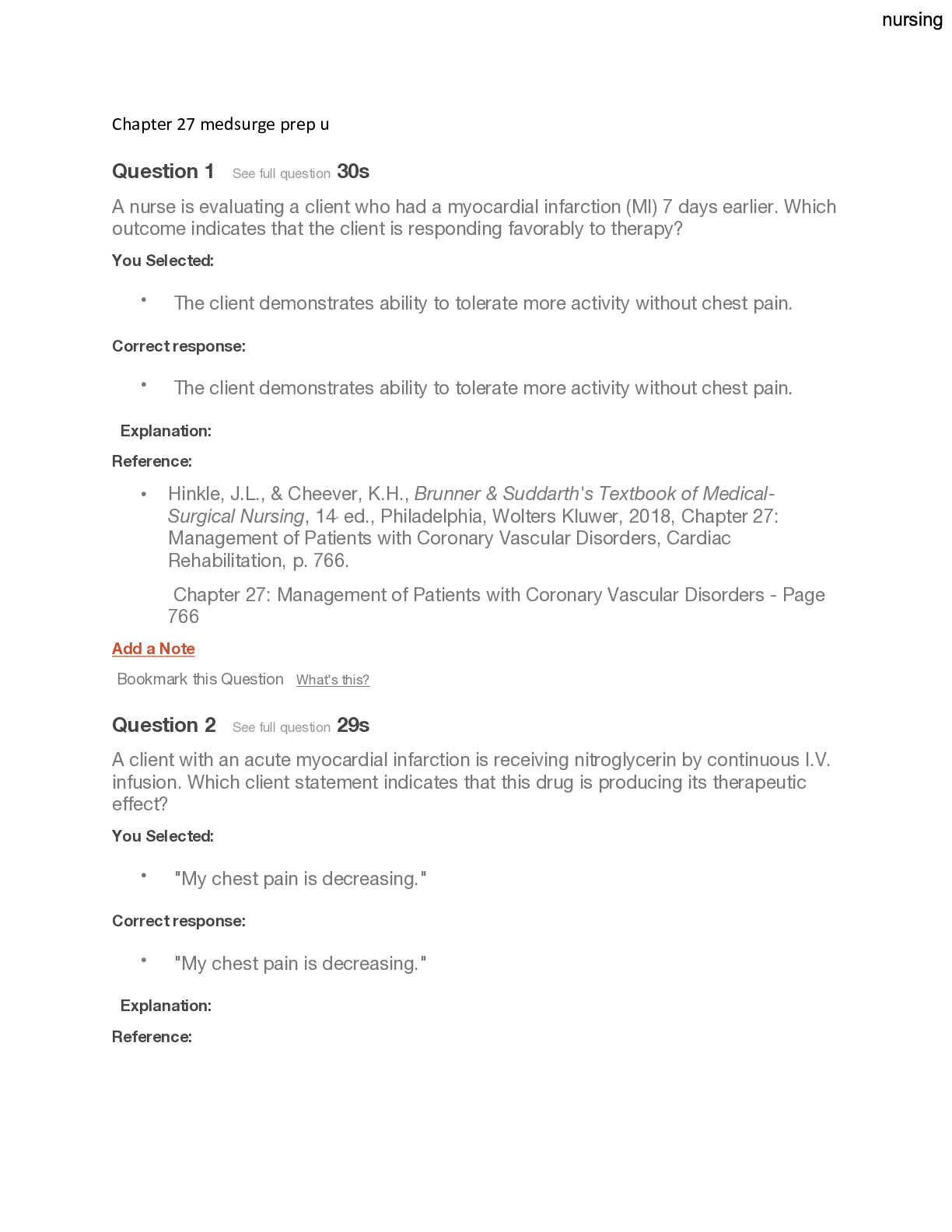

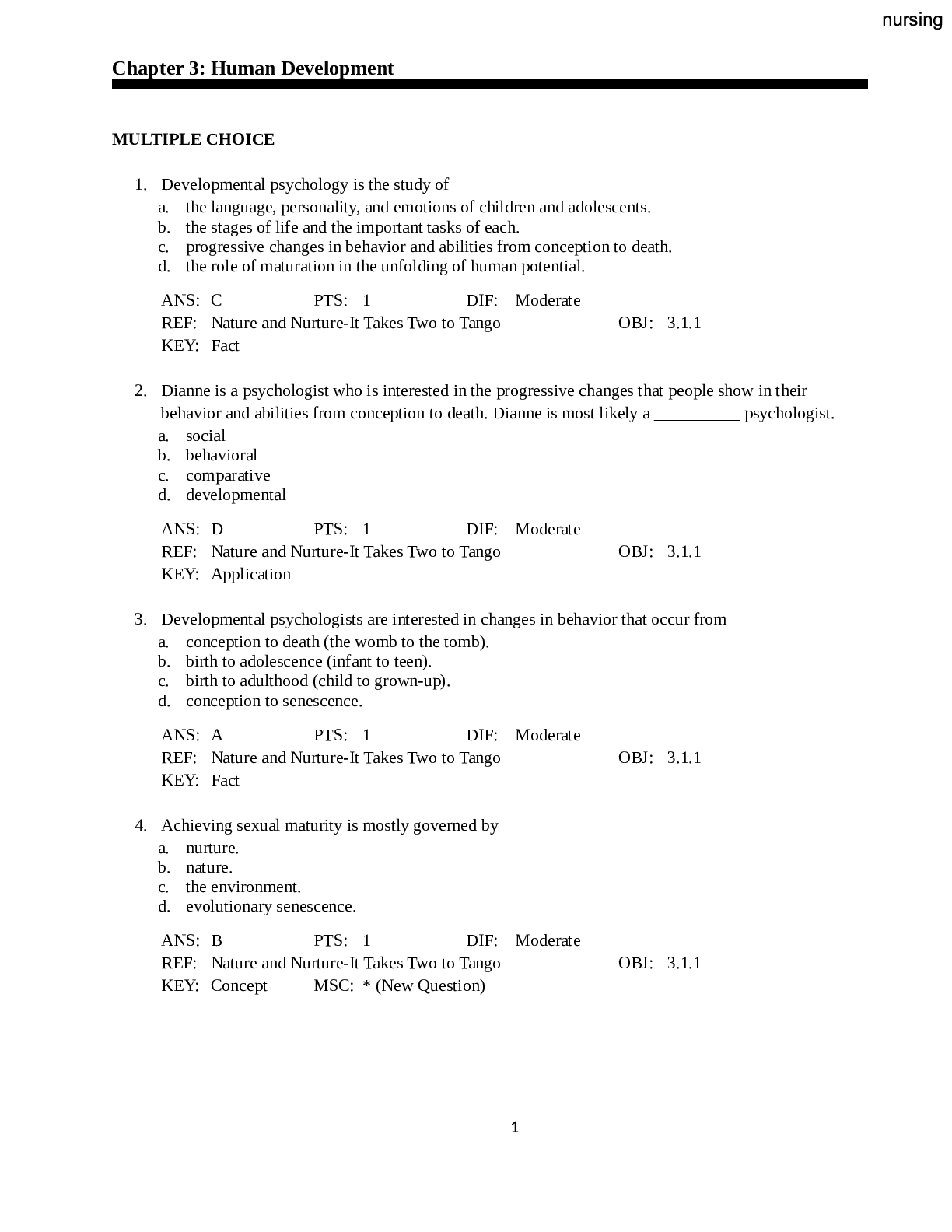



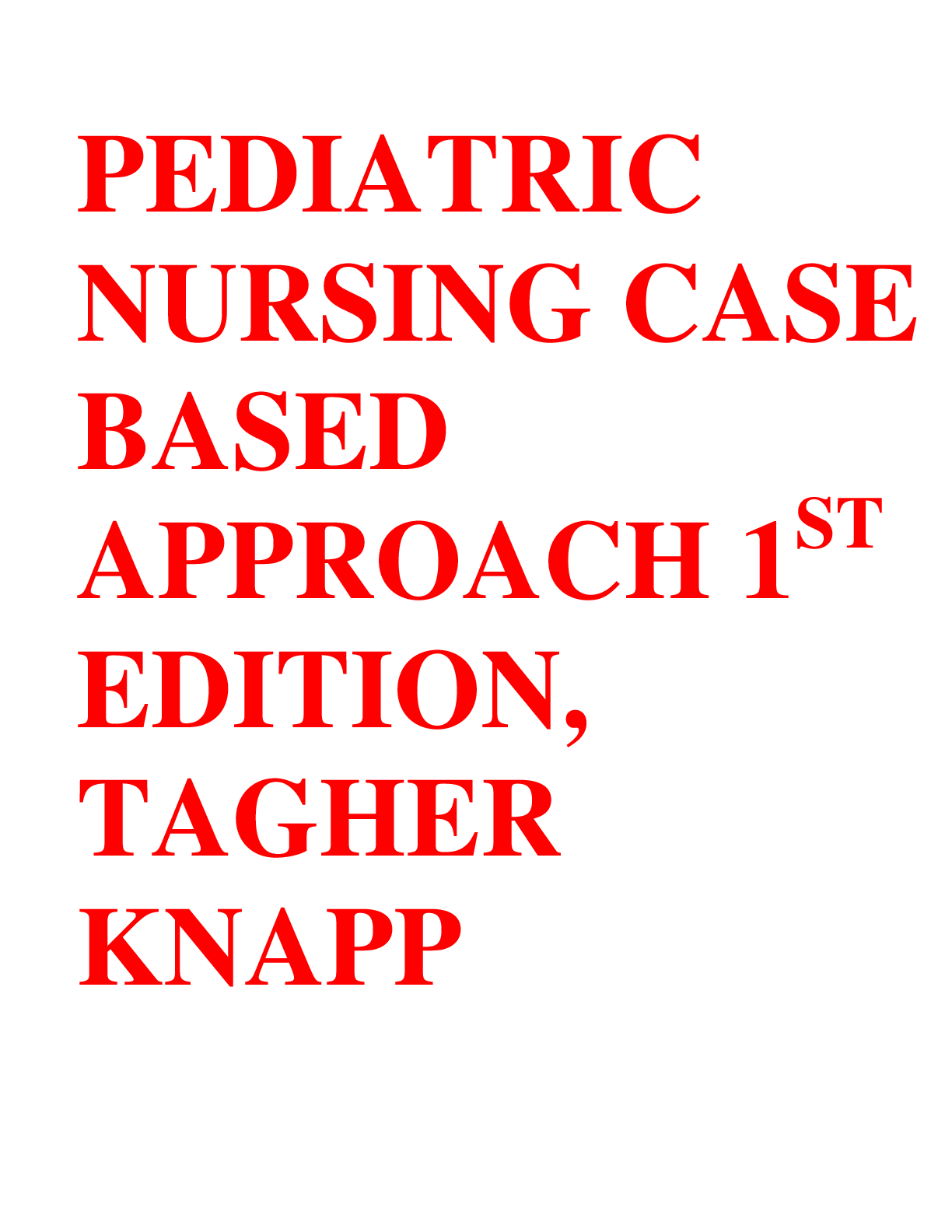



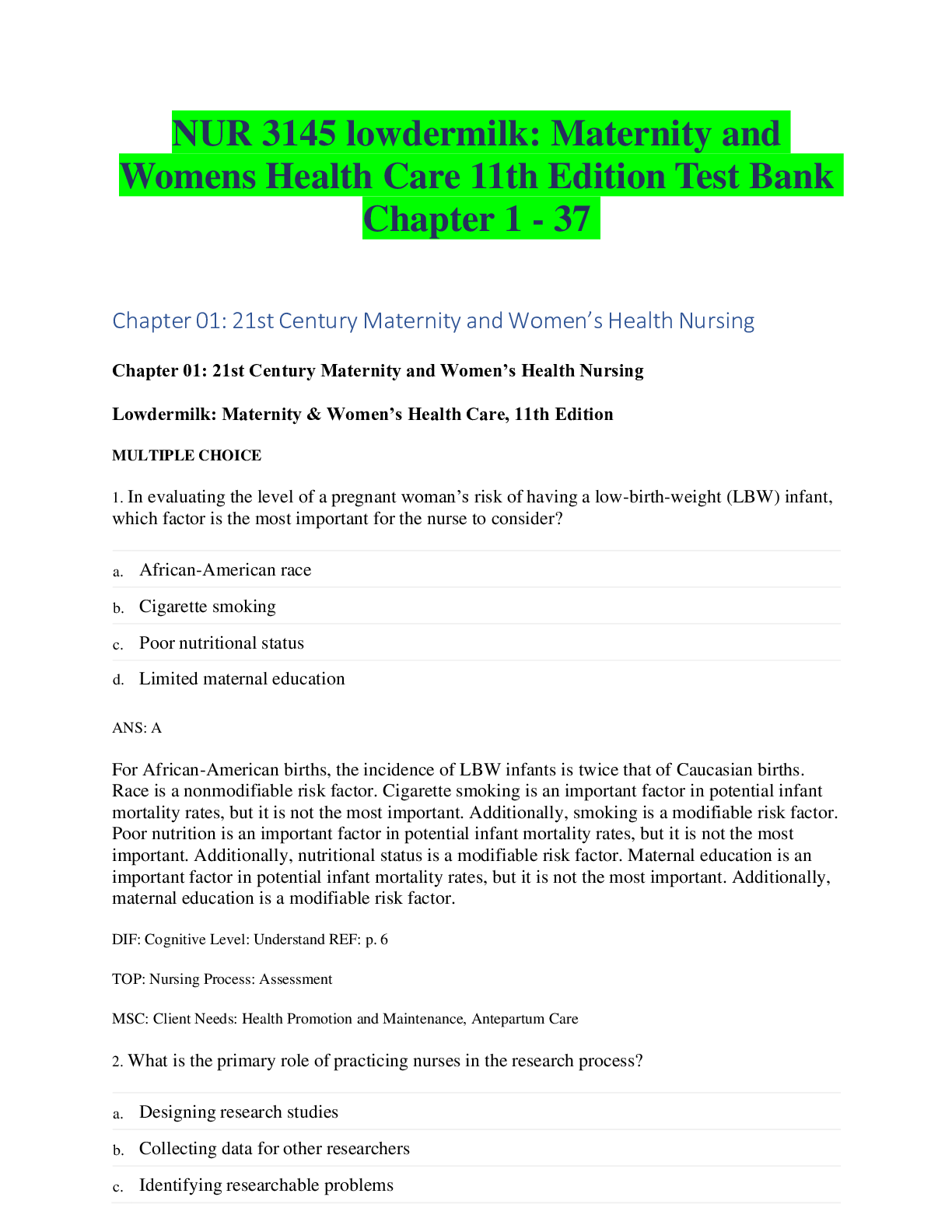
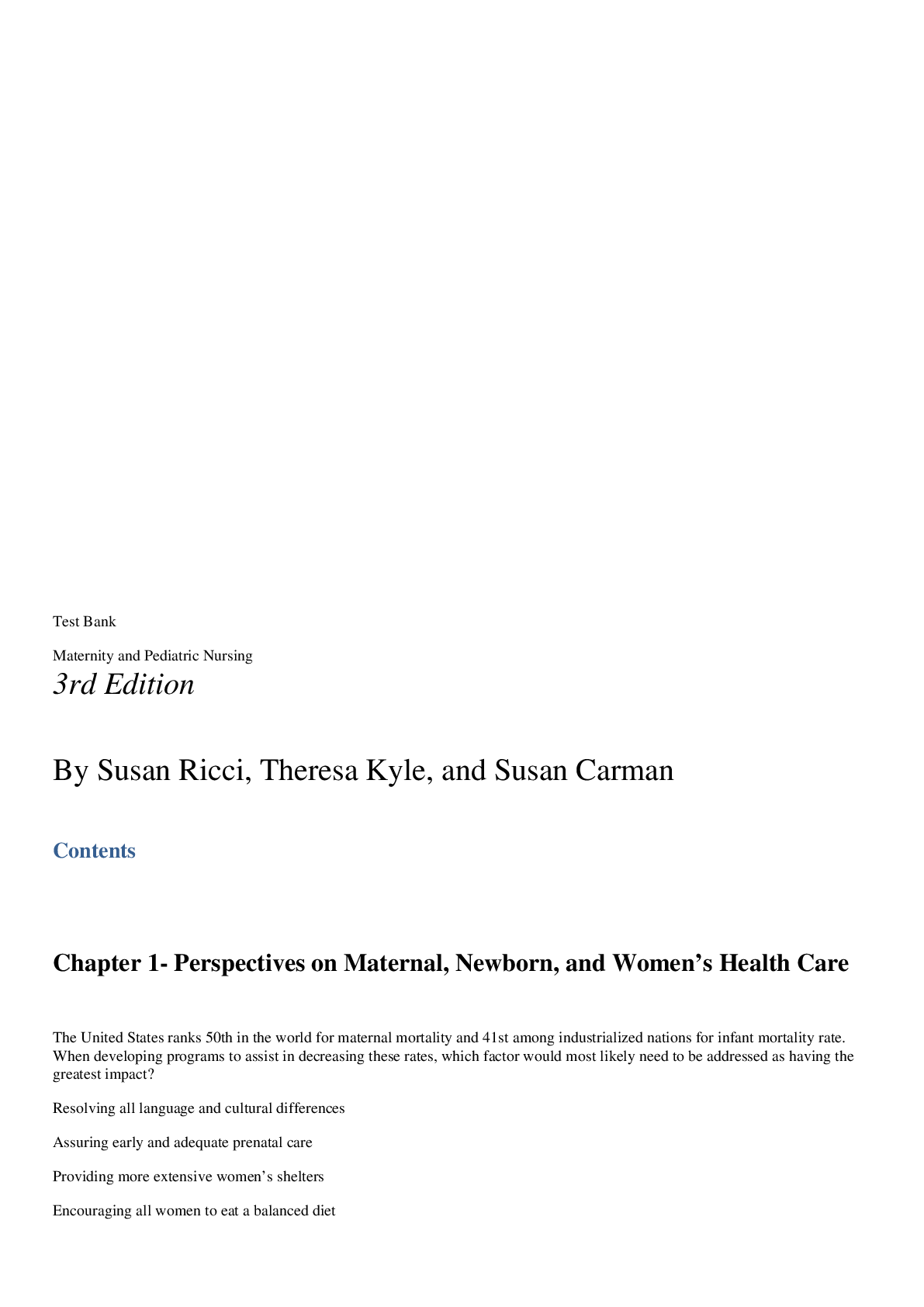
.png)
, All Correct, Download to Score A.png)
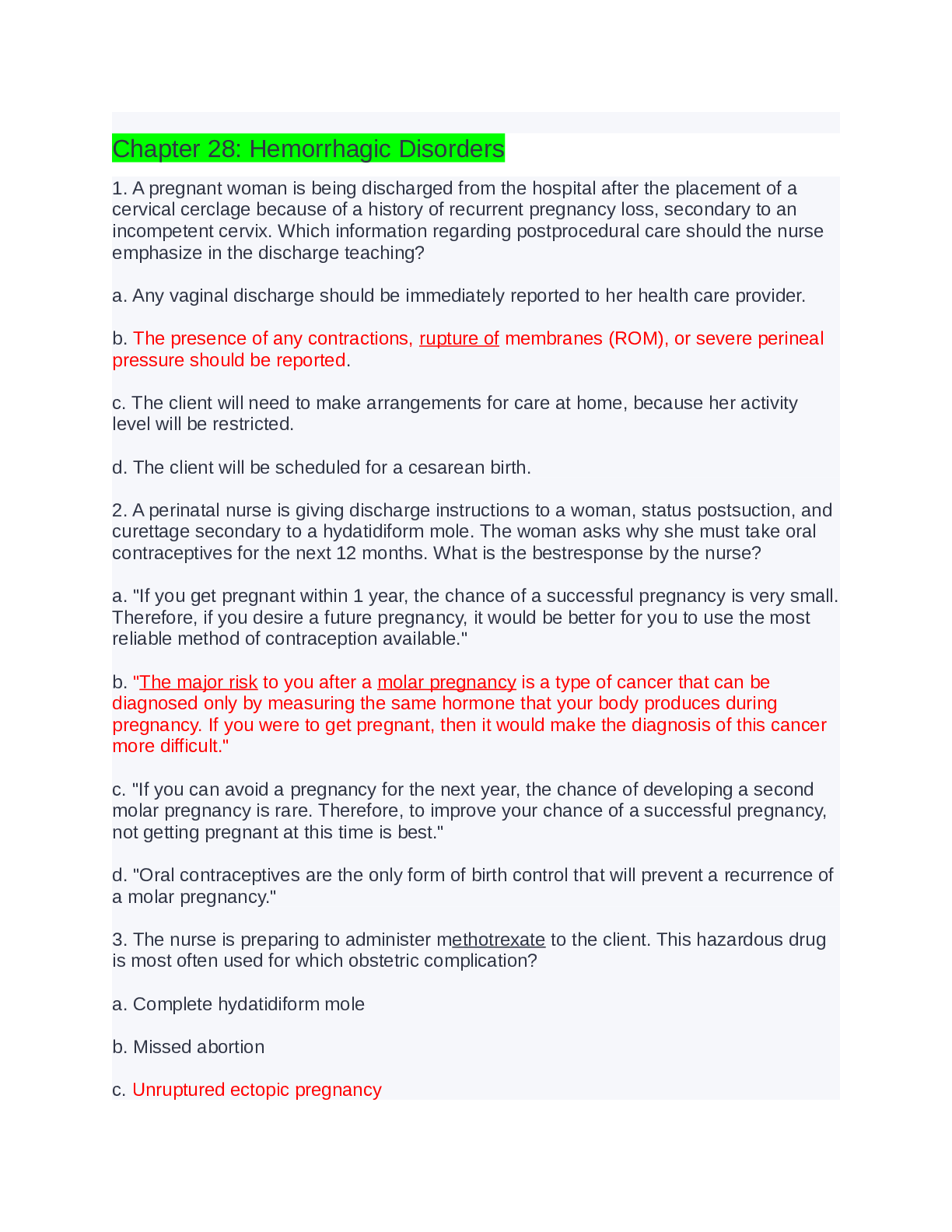
 Correct Study Guide, Download to Score A.png)
, Correct, Download to Score A.png)
.png)
, 100% Correct, Download to Score A.png)


